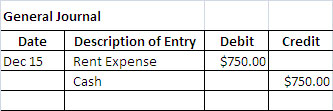As we discussed at the beginning of this course, you must decide whether to use a single-entry or a double-entry bookkeeping system. The single-entry system of bookkeeping is the simplest to maintain, but it may not be suitable for everyone. You may find the double-entry system better because it has built-in checks and balances to assure accuracy and control. This is such an important decision, let's review it again.
Single-entry. A single-entry system is based on the income statement (profit and loss statement). It can be a simple and practical system if you are starting a small business. The system records the flow of income and expenses through the use of
- A daily summary of cash receipts, and
- Monthly summaries of cash receipts and disbursements
Double-entry. A double-entry bookkeeping system uses journals and ledgers. Transactions are first entered in a journal and then posted to ledger accounts. These accounts show income, expenses, assets (property a business owns), liabilities (debts of a business), and net worth (excess of assets over liabilities). You close income and expense accounts at the end of each tax year. You keep asset, liability, and net worth accounts open on a permanent basis.
In the double-entry system, each account has a left side for debits and a right side for credits. It is self-balancing because you record every transaction as a debit entry in account and as a credit entry in another. Under this system, the total debits must equal the total accounts. If the amounts do not balance, you have made an error and you must find and correct it. An example of a journal entry exhibiting a payment of rent in December is shown next.

The terminology is somewhat confusing in a double-entry system. The Debit is the amount you pay out and the Credit is the account you pay it out of. The terms are almost backwards to what we normally think of.